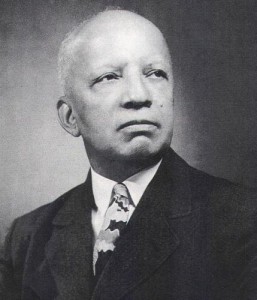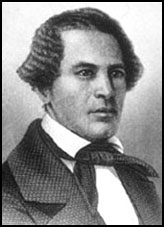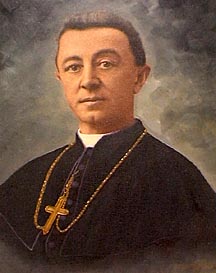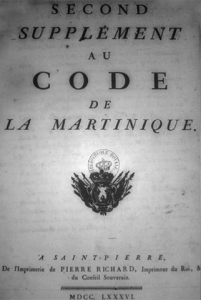Black History, Medicine
![caduceus[2]](https://blackusa.com/wp-content/uploads/2012/10/caduceus2.jpg) Louis was the first university-trained black physician, who after completing studies in Holland, practiced medicine in the colony of New Amsterdam (New York). In 1667 he received a land grant for his services.
Louis was the first university-trained black physician, who after completing studies in Holland, practiced medicine in the colony of New Amsterdam (New York). In 1667 he received a land grant for his services.
Black History, Events

Carter G. Woodson
Historian Carter G. Woodson was born to poor, yet land-owning, former slaves in New Canton, Virginia on December 19, 1875. During the 1890s, he hired himself out as a farm and manual laborer, drove a garbage truck, worked in coalmines, and attended high school and college in Berea College, Kentucky—from which he earned a B.L. degree in 1903.
In the early 1900s, he taught black youth in West Virginia. From late 1903 until early 1907, Woodson worked in the Philippines under the auspices of the U.S. War Department. (more…)
Black History, The Arts

- William Wells Brown
William Wells Brown was born near Lexington, Kentucky, in 1814. His father was George Higgins, a white plantation owner, but his mother was a black slave. “My mother’s name was Elizabeth. She had seven children, Solomon, Leander, Benjamin, Joseph, Millford, Elizabeth, and myself. No two of us were children of the same father.”
As a house slave he was better treated than the field workers: “I was a house servant – a situation preferable to that of a field hand, as I was better fed, better clothed, and not obliged to rise at the ringing of the bell, but about half an hour after.”
When he was a child his master moved to Saint Charles, Missouri. “My master owned about forty slaves, twenty-five of whom were field hands… in addition to his practice as a physician, he carried on milling, merchandising and farming. He had a large farm, the principal productions of which were tobacco and hemp. The slave cabins were situated on the back part of the farm, with the house of the overseer, whose name was Grove Cook, in their midst.” (more…)
Black History, Religion

James Augustine Healy the first black bishop ordained in the U.S.
James Augustine Healy, was appointed February 12, 1875, and consecrated as Bishop of Portland (Maine) at the Cathedral of the Immaculate Conception (see Cathedral) on June 2, 1875. James Augustine Healy became the first black bishop ordained in the United States. He was the son of an Irish immigrant, Michael Healy, who became a prosperous plantation-owner in Georgia, and a mulatto woman who was actually a slave.
James was educated in northern schools and later attended the newly established Holy Cross College. There he made his decision to enter the priesthood. He furthered his studies in Montreal and Paris where he was ordained in 1854 at the Cathedral of Notre Dame. After ordination Father Healy was assigned to Bishop John Fitzpatrick’s Boston Diocese. He remained there serving first at the House of the Angel Guardian, then as Chancellor of the Diocese and finally as pastor of St. James Church. When his appointment came as the second Bishop of Portland, he was forty-five years old. (more…)
Black History, Slavery
 On 4 February 1794, the First Republic (Convention) voted for the abolition of slavery in all French colonies. The abolition decree stated that “the Convention declares the slavery of the Blacks abolished in all the colonies; consequently, all men, irrespective of colour, living in the colonies are French citizens and will enjoy all the rights provided by the Constitution.”
On 4 February 1794, the First Republic (Convention) voted for the abolition of slavery in all French colonies. The abolition decree stated that “the Convention declares the slavery of the Blacks abolished in all the colonies; consequently, all men, irrespective of colour, living in the colonies are French citizens and will enjoy all the rights provided by the Constitution.”
Restored by the Consulate in 1802, slavery was definitively abolished in 1848 by the Second Republic, on Victor Schoelcher’s initiative.
![caduceus[2]](https://blackusa.com/wp-content/uploads/2012/10/caduceus2.jpg) Louis was the first university-trained black physician, who after completing studies in Holland, practiced medicine in the colony of New Amsterdam (New York). In 1667 he received a land grant for his services.
Louis was the first university-trained black physician, who after completing studies in Holland, practiced medicine in the colony of New Amsterdam (New York). In 1667 he received a land grant for his services.![caduceus[2]](https://blackusa.com/wp-content/uploads/2012/10/caduceus2.jpg) Louis was the first university-trained black physician, who after completing studies in Holland, practiced medicine in the colony of New Amsterdam (New York). In 1667 he received a land grant for his services.
Louis was the first university-trained black physician, who after completing studies in Holland, practiced medicine in the colony of New Amsterdam (New York). In 1667 he received a land grant for his services. On 4 February 1794, the First Republic (Convention) voted for the abolition of slavery in all French colonies. The abolition decree stated that “the Convention declares the slavery of the Blacks abolished in all the colonies; consequently, all men, irrespective of colour, living in the colonies are French citizens and will enjoy all the rights provided by the Constitution.”
On 4 February 1794, the First Republic (Convention) voted for the abolition of slavery in all French colonies. The abolition decree stated that “the Convention declares the slavery of the Blacks abolished in all the colonies; consequently, all men, irrespective of colour, living in the colonies are French citizens and will enjoy all the rights provided by the Constitution.”